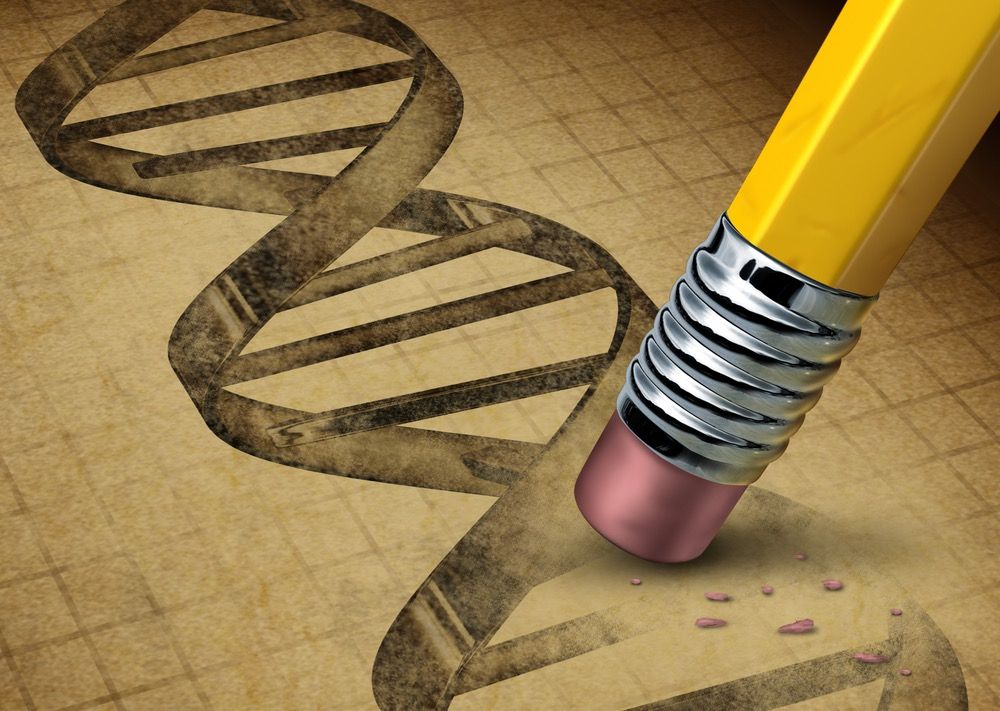There’s a new frontier of science that is having far reaching implications for the world. Gene editing, more commonly known by its new technique CRISPR, has the potential to change the food we eat, the plants we grow, the pets we keep and, more pressingly, it now has the potential to change the wars we fight. Unsurprisingly then, its use has profound national security implications, leading the U.S. Government to declare it a weapon of mass destruction in 2016.
So, does CRISPR have the potential to change war as we know it? The short answer is yes, because it also has the potential to change human life as we know it. Genes are the fundamental code of life. Mapping them allows us to understand how our bodies work and, more importantly, how to alter them. Long before CRISPR (an acronym for Clustered Regularly Interspaced Short Palindromic Repeats) was discovered, we have used selective breeding to manipulate these genes in a variety of applications for animals. The Nazi Lebensborn program provides one horrifying example of such attempts at eugenics in humans.
What makes this technology different, is its ability to target specific genomes at all stages of life; simultaneously and at low cost.
The upsides to this technology are therefore profound. CRISPR holds the potential to improve global food supplies, bring back extinct species, cure cancer, eradicate transmission of diseases, as well as protecting people from, and treating them for, a host of diseases and deformities.
The downside to this technology is that it also has the potential for warlike application. The same technology that can cure cancer or improve crops, also has the potential to cause cancer and destroy crops. Similarly, the same methods that are being trialled to eradicate the transmission of malaria in mosquitos can be used to create and spread those diseases. More importantly, these undesirable realities can be achieved through both off-target activity as well as intentional manipulation from states and non-state actors.
The threat posed by this technology extends well beyond sophisticated state actors. Home-made CRISPR kits can be ordered for less than $US169 and utilised with no more formal education than access to YouTube. The future potential for its use by malign actors may be limitless. Viruses can be created or manipulated to increase their morbidity and sophisticated actors could use that same technology to target specific ethnic groups.
While these applications could lead to new forms of warfare, the same technology has the potential to alter an enduring characteristic of war: the humans who fight them.
In one of his final articles before his death, Stephen Hawking warned of the perils of such technology changing the course of human evolution and creating a new race of ‘superhumans’. While observing that complex genetic changes will take time, the repair of genetic defects is an important first step in this revolution.
Imagine being able to ensure that your children will not be susceptible to potential lethal diseases. This is exactly what a Chinese scientist did in 2018 when he genetically edited twin girls prior to birth to ensure their immunity to HIV. But knowing where this editing should end is where the real challenges begin. The prospect of ‘designer babies’ is now a reality and has the potential to create new divisions of humanity.
War provides an obvious scenario for an accelerated application of Hawking’s ‘superhumans’ and, importantly, its application is not limited to the embryonic stage of human development.
As a defensive measure, combatants required to operate in CBRN environments could be enhanced to provide immunity or protection from these threats, not too dissimilar to how we use vaccines today. This same theoretical application is already being proposed for prolonged space flight and life on other planets. It is not unrealistic therefore to imagine a future conflict where combatants’ personal protective equipment includes measures on the genomic level.
But if humans can be enhanced for protective measures, they can also be enhanced for competitive advantage in a number of ways. Genetic engineering techniques used to correct eyesight could also be used to drastically improve vision by mimicking the genome of animals with advanced eyesight. Increasing muscle-mass, intelligence and memory while reducing aging and emotional connection to traumatic events are all now within the realm of the possible with dramatic implications for the future of warfare.
Despite it only being discovered relatively recently, U.S. funding for CRISPR research has increased from $US5 million a year in 2011 to $US1.1 billion by 2018, with China’s national investment expected to be considerably higher than this. The strategic competition in this field, often referred to as ‘Sputnik 2.0’ (for its reference to the beginning of the space race), will undoubtedly drive innovation in a way that will make regulation and containment more difficult.
As an emerging technology, there is much that we don’t know about the implications of CRISPR for the world. What we do know is that the proliferation of this technology and its ease of access poses huge potential for both innovation and abuse from a wide variety of actors.
So, what does this all mean for warfare? Well, war may continue to be a human endeavour, but the human in war could look very different in the not too distant future.
This is the second article in a series drawn from Major Gareth Rice’s research on the future of human performance at the ADF’s Force Design Division. You can find the first article published here.
About the Author: Major Gareth Rice conducts future warfare analysis for Force Design Division. His opinions do not necessarily reflect those of the ADF or Australian Government. If you have your own thoughts on this topic, please reach out to him at force.exploration@defence.gov.au. You can find him on Twitter at @RiceGareth.
Cover Image Credit: Wikimedia

